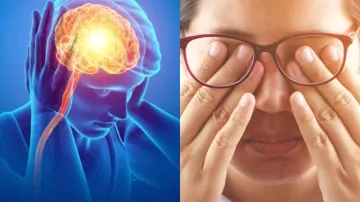What is the connection between neurology and vision? Know the impact of stroke on eyes
Visual disturbances which are associated with neurological disorders and strokes are numerous and may have severe and diverse impacts. It is vital to assess these effects to design appropriately elaborate management strategies incorporating neurologic and ophthalmologic treatments of the ailment.

The two organs most involved in the creation of vision are the brain and the eyes. When conditions like stroke or other neurologic abnormalities take place in the body, the fine balance between the visual pathways is upset, and profound vision loss results.
The Connection between the Neurology and Vision
When we spoke to Dr Digvijay Singh, Director, of Noble Eye Care, Gurugram, he said that our eyes are not solitary components of the body; they are even an extension of the brain itself. Vision starts when light falls on the retina and gets converted to electrical impulses which enter the optic nerve and reach the brain through the visual procortexture. Peripheral neuropathy, brain damage, cerebral vascular accidents and multiple sclerosis are some of the neurological disorders which can affect the processes and lead to various manifestations of visual dysfunction.
Eye Stroke
Ischemic optic neuropathy or stroke of the eyes is a growing peril and we are seeing more cases daily. The estimated incidence is 1in 10,000 persons. Eye stroke refers to a situation where less flow of blood to the optic nerve causes swelling and damage to the nerve. There are various risk factors for this including diabetes mellitus, hypertension, high cholesterol, cardiac disease and sleep apnea.
If you are above 50 years of age, suffer from lifestyle diseases such as heart disease or obesity and have poor control of blood pressure (high or low) or fluctuating blood sugars you are at risk of eye stroke. People who snore a lot can also develop this problem. Rarely it may be seen in people below 40 years of age too.
Ischemic Optic Neuropathy presents with sudden loss of vision particularly on waking up in the morning with swelling of the optic nerve seen on a retina examination. The vision loss is mostly painless although pain may be seen in certain severe forms of ischemic neuropathy.
Apart from changes in lifestyle and control of diabetes, blood pressure, lipids and heart issues, no specific treatment is proven. The use of blood thinners is helpful to prevent further strokes from developing.
There is a need to spread awareness amongst the population of the growing incidence of eye strokes and motivate people to adopt a healthy lifestyle and diet. Excessive snoring and episodes of transient blurring of vision should not be ignored as they may be a harbinger of ischemic optic neuropathy. An increase in eye strokes was also caused by the COVID-19 Pandemic and the recent spate of severe heat waves.
Brain Stroke
Brain strokes are quite different from eye strokes but can be a cause of significant visual disability. Brain strokes may be ischemic that is they are secondary to a reduction in blood supply to a part of the brain or can be hemorrhagic where they are caused by a bleed in the brain. These strokes, the ischemic ones in most cases, can affect the visual pathway which carries signals from the two eyes to the brain and results in a loss of vision in one side or quadrant of our visual field. This loss is mostly found in both eyes and is generally symmetrical. Early intervention for the stroke may result in near complete visual recovery though in most cases a residual field defect persists for life. Hemorrhagic strokes tend to cause disturbances in eye movements, squint and pupil issues which can cause double vision and light-dark visual dysfunction. Treatment of brain strokes requires a multidisciplinary approach between a neurologist, neuro-ophthalmologist and rehabilitation therapist. Many times, visual symptoms such as constricting fields, transient visual loss and intermittent episodes of double vision can indicate the possibility of developing a stroke. Any person having these symptoms must get checked by an ophthalmologist and neurophysician.
The Aspects of Timely Diagnosis and Interdisciplinary Approach
It is important to note that vision loss resulting from neurological disorders necessarily has a large social impact on a person’s life which includes, but is not limited to, mobility, accessibility, and emotional health. These conditions should be identified and managed early, preferably with the help of neurologists, neuro-ophthalmologists, and rehabilitation specialists. Annual eye checkups are advised for all patients; however, for those with neurological disorders or a pre-existing history of hypertension or diabetes, early vision changes may be detected on routine eye examination. Additional diagnostic tests that are useful in the management of these patients include OCT and visual field testing.
ALSO READ: Do you prefer to booze before sleep? Know how it impacts your brain